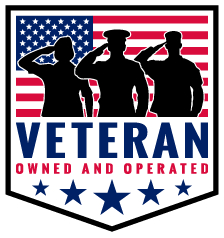Freight Industry Terminology
A
Accessorials: When a carrier performs freight services beyond normal pick-up and delivery.
Air-Ride Suspension: Trailers built to reduce shock from roads traveled in order to secure product safety. Trailers of this type are generally used to haul fragile items such as light bulbs. The suspension system on this trailer supports the load on air-filled rubber bags rather than steel springs.
Axle: Structural component to which wheels, brakes and suspension are attached.
B
Backhaul: Return trip of a vehicle from the original destination point back to the home base of the carrier or driver.
Bill Of Lading (BOL): A transportation document that is the contract of carriage containing the terms and conditions between the carrier and shipper. Required for all LTL shipments; Shipper must give the BOL to the driver at pick up.
Blind Shipment: A term used when our client requests that the shipper and/or consignee do not know about each other. The client who requests a blind load is a third party (middleman or broker). The shipper is the supplier and the consignee is the customer. If the consignee and shipper knew about each other they may cut out the middleman.
Blocks and Brace: This term refers to wood or other supports used to keep shipments in place on trailers or in containers throughout the shipping process. This technique is widely used by expert shippers to secure their freight shipment. LTL will generally not provide this service, only Partial and Full Truck carriers will provide this service.
Bobtailing: Operating a tractor unit with no trailer.
Broker/ Freight: An outside company that brings together shippers in need of transportation of goods and carriers looking for backhauls together.
Bulk Freight: Freight that is not packaged or containerized. Freight normally hauled via tanker truck.
C
Capacity: The ratio between the number of loads to trucks in a given area.
Claim: A charge made against a carrier for loss, damage or overcharge.
Commercial Invoice: An official document which is used to indicate, among other things, the name and address of the buyer and seller, the products being shipped, and their value for customs, insurance or other purposes.
Common Authority: Approved general carrier transporting commodities.
Common Carrier: Transportation available to the general public that does not provide special treatment to anyone party and is regulated as to the rates charged, the liability assumed and the service provided.
Conestoga: Flat bed with soft covering over it, similar to a wagon.
Consignee (CNEE): Party in which goods are shipped and delivered.
Consignor (CNOR): The party who originated a shipment of goods (shipper) The sender of a freight shipment. Also known as the seller, client or bill to.
Container: Standard- sized rectangular box used for intermodal transport.
Cross Dock: Warehouse operation that involves moving goods between different trucks to consolidate loads without intermediate storage.
Cubic Capacity: The carrying capacity (inside dimensions) of a piece of equipment according to measurement in cubic feet. When shipping light goods, load the trailer to the highest cubic capacity possible. Cubic Capacity may be calculated by multiplying the length x the width x height.
Customs Broker: A firm that represents importers/exporters in dealings with customs. Normally responsible for obtaining and submitting all documents for clearing merchandise through customs, arranging inland transport and paying all charges related to these functions.
D
Deadhead: Miles a driver moves empty without a load.
Deckable: Freight that is not physically touching each other but placed on a moveable shelf.
Declared Value (DV): A shipment’s declared value is the monetary value of a shipment as reported by you, the shipper. It serves as a basis for determining shipping charges and can also act as a tool to limit carrier liability for damage and loss.
Demurrage: The charge that the merchant pays for the use of the container within the terminal beyond the free time.
Department of Transportation (D.O.T.): Department of Transportation for the United States. Regulates rules and regulations relating to the transportation industry.
Detention: When shipments aren’t ready to be loaded, even if a truck driver arrives on time, the trucker is “detained” and must wait for freight (and its paperwork) to be prepped.
Dispatching: The scheduling and control of truck pick up and delivery. A critical link in the dispatching process is communication with the drivers through phone, pages, radio, satellite etc.
Distribution Center: The warehouse facility that holds inventory from manufacturing pending distribution to the appropriate stores.
Diversion: The process of changing the destination while the shipment is en route. An additional charge for the excess miles will be charged.
Door to Door: Movement from a customers front door (dock) to a receivers (dock) (known as drayage).
Double Blind Shipment: Freight shipment where both the pickup location and delivery location are falsified to the consignee and shipper, respectively.
Double Drop Deck: A flatbed with the lowest deck. Featuring a raised step at the front. where the trailer attaches to the fifth wheel, and at the back, where the wheel wells are located. Normally used for oversized/overweight items.
Doubles: A tractor and two semi trailers connected in tandem by converter dolly.
Drayage: Movement of a container or trailer to or from the railroad intermodal. terminal to or from the customers facility for loading or unloading.
Draymen: A person hired to pick up or drop off a container or trailer at an intermodal terminal.
Drive Axle: An Axle that is driven by the engine; legal axle weight is 34k lbs.
Driver Assist: When a draymen is required to assist in the loading and unloading of a container/trailer.
Drop Trailer: When a trailer or boxcar is left at a facility to either be loaded or unloaded to/from.
Dropdeck: A flatbed with a lowered deck, featuring a raised step at the front, where the trailer attaches to the fifth wheel.
Drop & Pick: When the truck driver drops off the container at the warehouse and then picks up a different, empty container before leaving.
Dry Van: A simple, enclosed non-climate controlled rectangular trailer that carriers general cargo, including food and other products that do not require refrigeration. Usually loaded and reloaded through rear doors, requiring elevated access for forklifts to enter the trailer.
Dunnage: Is the durable padding material used to protect goods during shipping. Dunnage can be anything from bubble wrap and packing peanuts, to industrial solid plastics that provide cushioning so items stay put and unbroke.
E
Exclusive Use: Cargo Van or freight truck where the freight in the truck is dedicated to one person or company.
F
Flat Bed: A flat trailer with no enclosures or doors. Can be loaded & unloaded from the sides or above, and does not require elevated access for a forklift.
Flatcar: A freight car having a floor without any housing or body above – used to carry containers/trailers/oversized- odd shaped commodities.
Forklifts: Gas powered, used for full truckload, larger freight. Lifts up to 4,000lbs. Forklift services at pick up or delivery need to be arranged by the customer.
Freight Bill: The carrier’s invoice for payment of transport services rendered.
Freight Broker: A middleman between shippers and carriers. Instead of taking possession of the freight, the broker facilitates communication between the shipper and the carrier, making sure the handoff goes smoothly, and that freight arrives safely and on time.
Freight Class: Freight classes are a measurement that allow for standard prices across all LTL freight carriers and businesses. Freight classes are determined by the NMFTA, or National Motor Freight Traffic Association.
Freight Payables: Freight Bill in need of payment.
Fronthaul: To the carrier, it is the total weight of the loaded truck (sum of the weight of the goods, fuel, packaging, pallets, tractor and trailer.
Full Truckload (FTL): A shipment that utilizes the entire space of the trailer. These shipments take up most or all of the space and or weight the trailer can handle.
G
Gross weight: Total weight of the vehicle and the payload of freight or passengers.
H
Hazmat: Explosive, poisonous, or otherwise potentially dangerous cargo. Hazardous materials must be transported by specialty certified carriers.
Headhaul: When a carrier picks up freight near their home base, then brings it to a different location for delivery.
HOS: Hours of service; the hours a driver is legally allowed in a 24 hour window.
Hub & Spoke System: The system by which LTL shipments currently move via LTL carriers. Multiple stop points and transfer of products throughout transit.
I
Insurance by Liability: Cargo and Accident liability.
Intermodal: A single trailer or container that encounters multiple forms of transportation along it’s route, such as truck and rail, truck and air or rail and ocean; Drayman or Drayage carriers are sued to haul between connecting points.
L
Lane: Freight term for route from pick up to destination; the path of shipment from point A to point B.
Layover: A delay that requires a driver to stay for an extended period of time or overnight to get loaded or unloaded.
Lead Time: Amount of time client tenders the load to when it is picked up.
Less Than Truckload (LTL): A shipment that does not require the entire capacity of the truckload trailer. Weight is typically less than 7,500 lbs. and less than 12ft of trailer space. Trucking companies consolidate shipments to maximize the trailer’s space. Trucking companies consolidate shipments to maximize the trailer’s entire space and utilize a network of terminals and relay points. LTL is rated upon class and weight and distance.
Letter of Authority: License to engage in operations, interstate and foreign commerce.
Liftgate (LG): A liftgate is a power-operated tailgate capable of lifting pallets from street level to the floor of a trailer. Shipper locations with no loading docks often have lift gates, as do many LTL truck fleets.
Linehaul: The inter-city portion of the trip that occurs after freight is picked up and delivered to the origin and prior to the delivery at the destination.
Load to Ride: Picking up your freight directly at the shipping location and loading it to ride directly to the delivery eliminates loading and unloading your freight at numerous terminals.
Loading time: Time it takes to load a truck
Loose Capacity: More trucks than loads (Loose Market): Truckers in low demand
LTL Tariffs: A tariff may be either tax on imports or exports (trade tariff) or a list or schedule of prices.
Lumper Service: When freight is unloaded from a trailer and pallets are broken down into smaller bundles if required per the receiver’s instructions.
M
MC Number: Motor Carrier Number – Every carrier and 3PL is assigned a MC number. This number allows carriers to cross state lines and it also allows the government to track brokers through their system.
Mileage: COGS determined by a base unit of one mile.
Multi-Stop: Load contains more than one pick up or drop off for completion of delivery.
N
Net Weight: Weight obtained by deducting the weight of the tractor trailer from the total weight of the truck.
NMFC: National Motor Freight Classification. The NMFC was created to standardize pricing for freight shipments. Every commodity shipped in the US belongs to one of eighteen freight classes, determined by four factors; shipment density, stow-ability, handling, and liability.
NMFTA: National Motor Freight Traffic Association; Provides expertise in freight classification, packaging and transportation codes.
No Touch: Load that des not require driver to load or unload product.
NOI: When a product doesn’t have a specific class; dependent on density.
O
Over- Dimensional: Special permits are require for Oversized Loads; May vary by state.
P
Pallet: (48×48) Accessible by all 4 sides. Can hold up to 2,500 lbs, weighs between 25-50 lbs and has a top and bottom deck.
Pallet Jacks: A pallet jack is a tool used to lift and move pallets. Pallet jacks are the most basic form of a forklift and are intended to move pallets within a warehouse.
Partial Truckload (PTL): Shipments that are larger than LTL but less than Full Truckload. Also known as PTL shipping.
Per Diem: (per day) is a detention fee where a fixed rate is charged per container per day until the equipment is returned to the port or container yard.
Pickup Flexibility: Options that client has on when a shipment can be picked up (multiple days).
PO (Purchase Order): The purchaser’s authorization used to formalize a purchase transaction with a supplier.
Private Carrier: A carrier that provides transportation services to the firm that owns or leases the vehicles and does not charge a fee. Private Motor carries may haul at a fee for wholly owned subsidiaries.
PRO#: A carrier assigned number used to identify a specific shipment in their system.
Proof of Delivery (POD): Information supplied by the carrier containing the name of one person who signed for the shipment, the time and date of delivery and other shipment delivery – related information. Also known as a POD.
Pup Trucks: A trailer between 26 feet and 29 feet long that can be used singularly as a delivery trailer in congested areas or in combination with another trailer for over the road.
R
Receiving Dock: Location where product is being unloaded from the truck.
Reconsignment: When a customer changes the name and location of the consignee when the truck is en route. A charge is assigned for the assessment.
Reefer Trailer: A term used for refrigerated vehicles. A refrigerated trailer has insulated containers to keep the cargo cool while in transit.
S
Shared Truckload (STL): A freight mode that enables several shippers to share trailer space in one multi-stop full truckload.
Sidekit: A flatbed with specifically fitted side plates and curved ribs supporting a tarp covering.
Skid: (48×40) Accessible by 2 sides. Can hold up to 2,500 lbs, weighs between 25-50 lbs and only has a top deck.
Sort and Seg: Required when a shipper wants verification that all the goods shipped reached the destination. Sort and Seg means that the driver, lumpers or dock workers count every case on the pallet when it is received.
Stackable Freight: Freight that can be stacked on one another.
Super Sack: Giant tote bag mainly used for grain, corn, rice.
Swing Doors: Must be opened before backing up to dock; swing doors allow for taller products.
T
Tailgate: When a driver is required to bring the cargo to the back of the trailer. This generally occurs when the receiver does not have a loading dock or forklift.
Team Driver: A team of two or more drivers who ride together and drive the same truck in shifts, essentially allowing the truck to remain in motion almost constantly. Primarily used for time sensitive freight.
Terminal: A dock at which freight is sorted and redistributed onto different trucks.
Third Party Logistics: Outsourced provider that manages all or a significant part of an organization’s logistics requirements; Freight Broker.
TONU Charge (Truck Order Not Used): A fee that is charged by the trucking company to the customer for cancelling an already firm and agreed delivery or pickup arrangement, or not being available upon the arrival of the truck.
Tote: Used to package chemicals.
Track and Trace: A software-based solution to track vehicles and shipments from origin to destination.
Trans-loading: The process of transferring a shipment from one mode of transportation to another. Products are moved between conveyances rather than staying in the same container the entire trip
Transit Time: The total time that elapses from pick up to delivery of a shipment. Transit days typically do not include the day of pick up weekends or holidays.
Tri-Axle Vehicle: A truck, tractor, or trailer with three axles grouped together at the rear.
V
Volume LTL: Shipments of partial loads serviced by LTL carriers.
W
White Glove Services: Specially trained drivers and specialty equipment for the safe transport of sensitive shipments.







